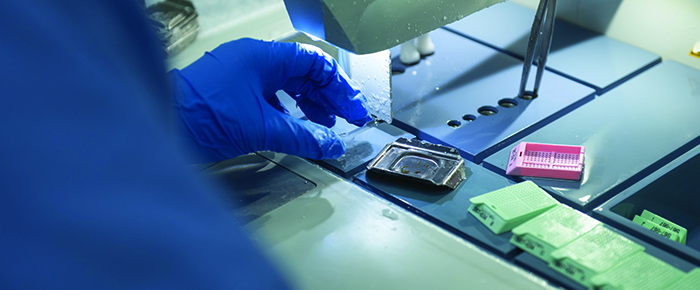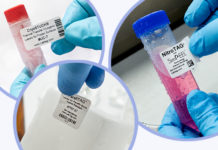
Histology is a necessary element of medical and research laboratories. Physicians rely on histochemical staining analysis to confirm diagnoses and provide patients with prognostic information, while research labs employ histochemistry for the analysis of samples from both patients and model organisms. As such, accurate and consistent identification of all components used throughout histochemistry workflows, including cassettes, is critical, as mix-ups can result in loss of patient tissues, misdiagnosis, and high risk for patient harm. Here are several tips for ensuring these embedding tissue cassettes remain properly identified from beginning to end of the histological procedure.
Utilize enhanced tracking methodologies
For medical and research labs, handwritten labels are no longer the norm. It is now essential to implement a thorough identification system that includes a laboratory information management system (LIMS) in conjunction with barcode and/or RFID labels. This ensures that all samples are tracked from delivery through processing and analysis, as each item is scanned and accounted for in the system. Ultimately, human errors can be avoided, which is crucial for patient samples; even a single error in identifying the proper cassette can lead to a misdiagnosis, posing significant harm to the patient.
When it comes to using barcode or RFID, each has its own pros and cons:
RFID
Pros:
- Scan multiple items simultaneously
- No need for a direct line-of-sight
- Can be used alongside barcodes using a thermal-transfer RFID printer
- Provides a high level of security
- Tags can be re-encoded
- Can be adapted to almost any label
Cons:
- Requires additional testing to ensure the system works efficiently
- Higher setup and operational costs
- Limited readability in liquids or near metal
Barcodes
Pros:
- Lower cost
- International standards available
- Barcode grading available
- Quicker to test and implement
- Can be adapted to any label
- Multiple types of barcodes afford adaptability based on workflow
- Can be printed using a variety of different types of printers
Cons:
- Labels can’t be re-used
- Lower level of security
- Individual labels must be scanned using direct line-of-sight
The choice of identification method must, therefore be based on the lab’s needs and resources. RFID is recommended for facilities that process high volumes of specimens, whereas barcodes may be advantageous for smaller labs. Regardless of the method, testing the full identification system from start to finish before full-scale implementation is essential.
Rely on cassettes that provide chemical resistance
To keep barcode and/or RFID labels affixed to histology cassettes, they must first be “locked” to ensure they do not fall off when immersed in harsh solvents. HistoBAR™ cassettes achieve this with a unique mechanism: the tissue cassette lid closes around the label, maintaining its integrity throughout processing.
Employ the right labels and printout
Chemical-resistant labels are a staple of all histology protocols. Even on surfaces with a lot of friction, such as microscope slides, general-purpose labels will fall off when immersed in solvents like alcohols, xylene, and xylene substitutes. Histology cassettes have proven even tougher to label due to their rough plastic surface. This has resulted in most labs relying on expensive cassette printers, as labeling standard cassettes remains untenable. Therefore, it is recommended that XyliTUFF extended exposure xylene-resistant labels (patent pending) be utilized together with HistoBAR cassettes to overcome this challenge. These labels are specially designed to work with HistoBAR cassettes, ensuring label placement is optimized and that the label withstands all histochemical procedures.
Note that these labels are used with thermal-transfer printers. This is because thermal-transfer printouts provide sufficient resistance to xylene and other harsh chemicals, ensuring the printout does not fade or smudge during or after immersion.
Integrate sample tracking technologies with testing and training
When integrating new technology and workflows into existing processes for tracking tissue cassettes, it’s essential to test the system prior to full implementation and train personnel once the system has been refined.
Prior to wholesale implementation, it pays to collaborate with a trusted label manufacturer and supplier of identification systems, as they can provide the support necessary to troubleshoot issues that may arise when testing any new identification technology. By providing samples, it is also possible to analyze the system and ensure that it withstands the stringent requirements of your workflow.
Once the system has been initially optimized, training is crucial to give all staff experience using it beforehand. This is done to minimize potential errors, address questions they may have, and further tailor the system to their needs. Fully integration can only occur once everyone is on the same page and understands the complexities of the new technology, especially when significant changes are made, such as utilizing an entirely new LIMS software or a different tracking method.
LabTAG by GA International is a leading manufacturer of high-performance specialty labels and a supplier of identification solutions used in research and medical labs as well as healthcare institutions.



